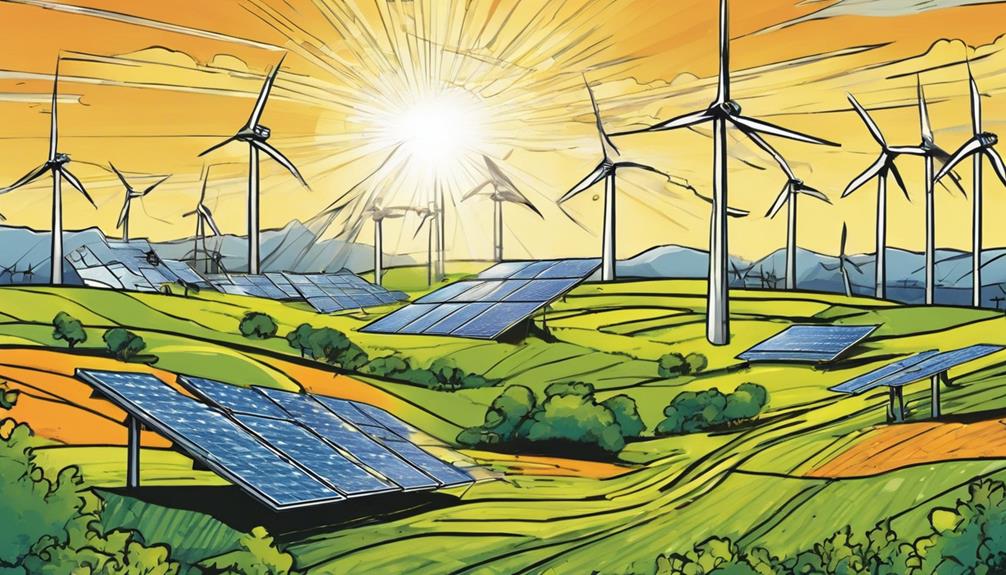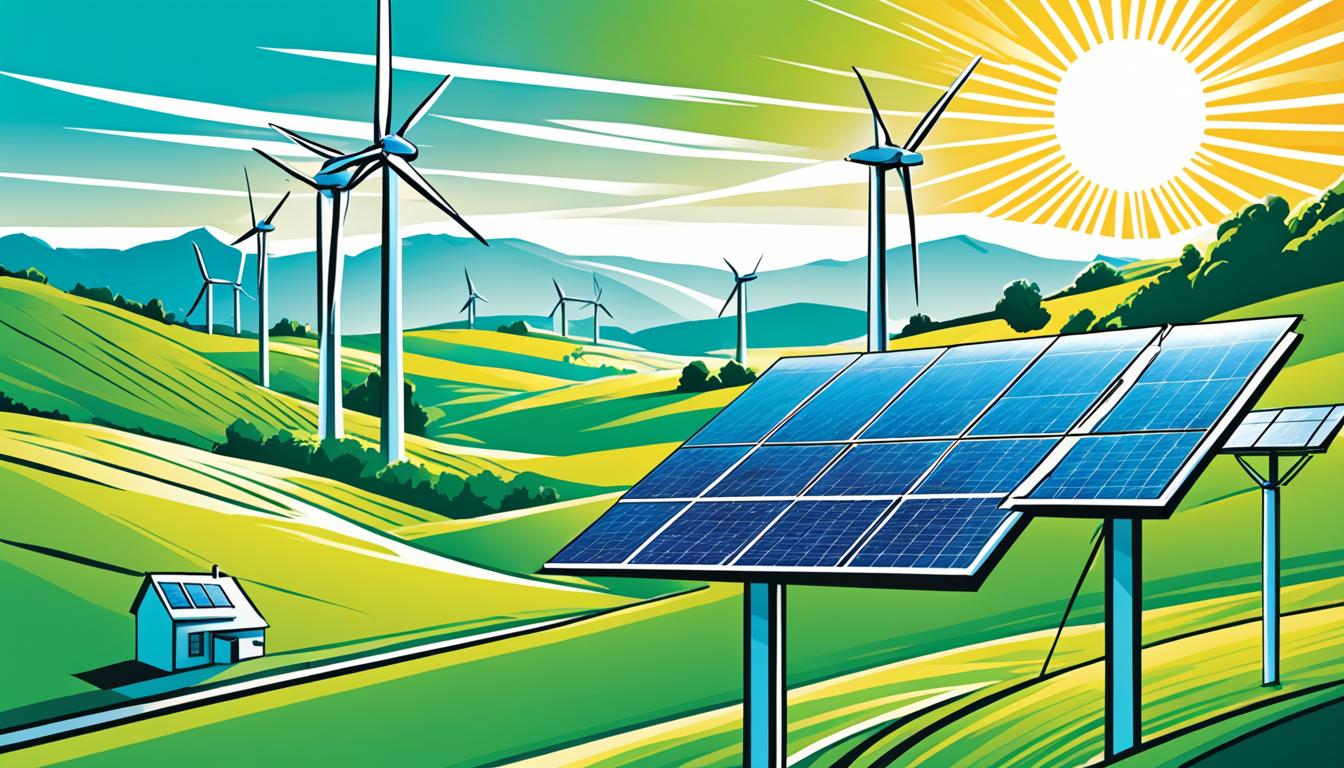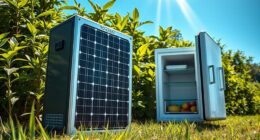Switching to solar and wind energy benefits you in many ways. They are renewable, reducing your reliance on traditional sources. By utilizing them, you lower your environmental impact while improving public health. The deployment of these energies even prevents premature deaths. Advancements in technology make them more cost-effective too. These are just a few advantages you could start enjoying today!
Key Takeaways
- Renewable energy sources reduce reliance on combustion-based electricity.
- Solar and wind energy decrease environmental footprint.
- Improved air quality and public health benefits.
- Cost-effective with technology advancements.
- Significant reduction in power-sector emissions.
Solar and Wind Energy Benefits
In recent times, the advantages of solar and wind energy have become increasingly apparent in the shift towards cleaner and more sustainable power sources. Both wind and solar energy are renewable energy sources that play a vital role in reducing our reliance on combustion-based electricity generation. By utilizing wind and solar energy, we can notably decrease our environmental footprint and lessen the harmful impacts of traditional power sources on our planet.
One of the key advantages of wind and solar energy is their positive impact on public health. By decreasing the use of fossil fuels for electricity generation, wind and solar energy help improve air quality, leading to fewer cases of respiratory illnesses and cardiovascular diseases. In fact, the deployment of wind and solar energy has already prevented thousands of premature deaths, showcasing the tangible public health benefits of shifting to cleaner energy sources.
Embracing wind and solar energy not only benefits the environment but also enhances the well-being of communities through improved air quality and reduced health risks.
Regional Variations in Benefits
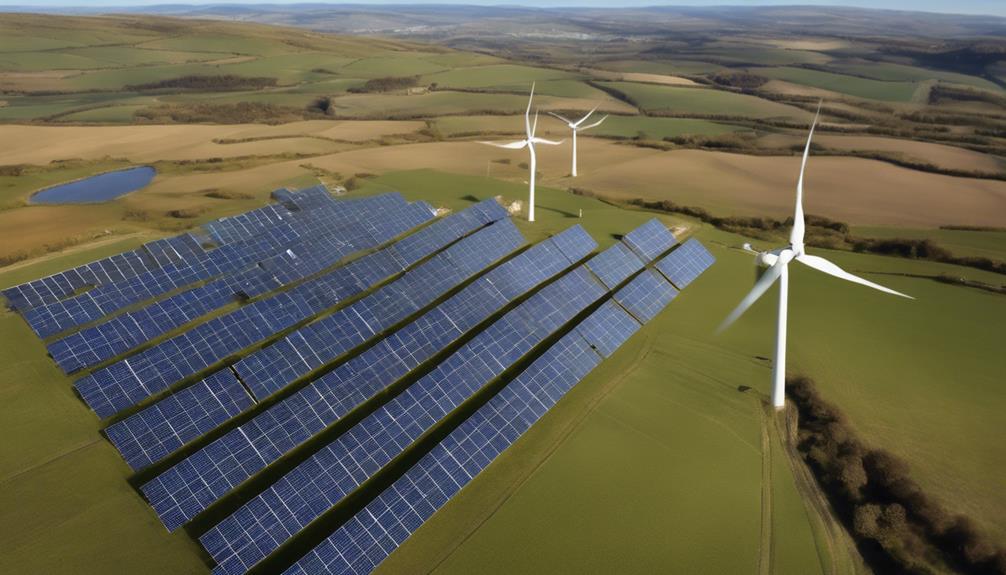
You'll find that the benefits of solar and wind energy can differ greatly depending on where you are.
Factors like geographical location, resource availability, and local policies all play a role in shaping these regional variations.
Understanding these differences is key to developing effective strategies and maximizing the advantages of renewable energy sources.
Regional Benefit Variances
Regional variations in benefits from solar and wind energy are influenced by geographical factors and resource availability. The energy output of wind systems and solar capacity differ across regions, impacting the benefits derived from renewable energy sources.
Additionally, regional policies and regulations play an essential role in shaping the overall advantages of utilizing wind and solar energy. Factors such as the environmental footprint, energy costs, and the effectiveness of renewable energy initiatives can vary significantly based on location.
Understanding these regional variations is key to effective planning and optimizing the positive impacts of renewable energy technologies. Changes in wind and solar deployment, along with shifts in regulations and resource availability over time, contribute to the dynamic nature of regional benefit variances.
Policy Influence Analysis
Policy analysis reveals how local regulations and governmental decisions shape the benefits of solar and wind energy in different regions. Regional variations in air quality and climate benefits from renewable energy are influenced by policy influence.
Understanding these variations is essential for effective planning to maximize the positive impacts of renewable energy sources. Changes in regulations, fossil fuel prices, and technological advancements further impact the benefits of wind and solar energy across regions.
Research indicates that the cumulative air-quality benefits of wind and solar energy can range from US$29.7–$112.8 billion, while climate benefits range from US$5.3–$106.8 billion, highlighting the significant impact of these renewable energy sources on various regions.
Changes Over Time
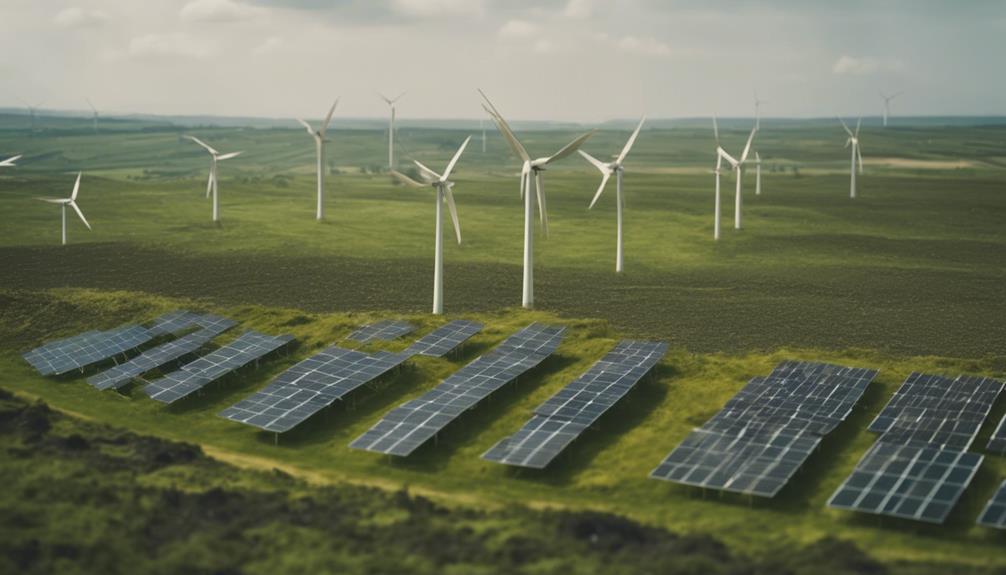
You'll explore how the benefits of wind and solar energy have evolved over time, considering the rapid deployment and advancements in technology.
Regulatory impacts and changes in fuel prices have played an important role in shaping the landscape of renewable energy development.
Understanding the historical context and trends in wind and solar energy deployment is essential to grasp the full scope of their benefits.
Evolution of Benefits
Over the past decade, the benefits derived from solar and wind energy have developed considerably due to increased deployment and technological advancements.
The advantages of solar energy and wind power have become more pronounced as they offer cleaner alternatives to fossil fuels for energy production. Regulatory changes and fluctuations in fossil fuel prices have further underscored the benefits of shifting towards renewable energy sources like wind and solar.
The continuous advancements in technology haven't only made these forms of energy more efficient but also more cost-effective, enhancing their overall benefits. As a result, there have been significant reductions in power-sector emissions of air pollutants and carbon dioxide over time, directly attributed to the increased deployment of wind and solar energy.
Understanding how these benefits have evolved is crucial for recognizing the long-term positive impacts of embracing wind and solar energy as key components of the energy mix.
Regulatory Impact Analysis
Amidst the evolving landscape of energy regulation and market dynamics, the impact analysis of regulatory changes on wind and solar energy highlights the critical role played by policy decisions in shaping the benefits of renewable energy sources over time.
When considering the regulatory impact analysis, it becomes evident that wind and solar deployment has surged in recent years, significantly altering the energy generation mix. This growth is closely tied to reductions in power-sector emissions of criteria air pollutants and CO2, showcasing the positive influence of renewable energy adoption on environmental health.
Moreover, as wind and solar energy technologies continue to advance, the evolution of climate benefits and air-quality improvements persists, emphasizing the importance of ongoing regulatory assessments. Understanding how these changes impact public health is crucial for evaluating the long-term advantages of transitioning towards sustainable energy sources.
- Wind and solar deployment has increased rapidly over the past decade.
- Regulatory changes and fluctuations in fossil fuel prices impact the benefits of wind and solar energy over time.
- Steep reductions in power-sector emissions of criteria air pollutants and CO2 have been observed.
- Continuous evolution of climate and air-quality benefits is happening as wind and solar energy technologies improve.
Impact on Deployment
The increasing utilization of wind and solar energy resources has shown significant changes over time, reflecting the evolving landscape of renewable energy adoption. As regulatory modifications and fluctuations in fossil fuel prices impact the benefits of wind and solar energy, the deployment patterns have shifted to adapt to these influences. The continuous evolution in climate and air-quality benefits from wind and solar energy deployment underscores the importance of tracking these changes. Understanding regional variations is vital for effective planning and maximizing the benefits of renewable energy sources. Evaluating how the deployment of wind and solar energy has evolved over time is essential for making informed decisions regarding energy transformations.
| Trends in Wind and Solar Energy Deployment | Examples of Changes Over Time |
|---|---|
| Increased capacity of wind farms | Shifting focus towards community solar projects |
| Growing number of utility-scale solar installations | Introduction of feed-in tariffs to incentivize renewable energy adoption |
Research Findings

Research findings on the advantages of solar and wind energy reveal significant economic and public health benefits. Studies show that the deployment of wind and solar power has led to substantial reductions in power-sector emissions of air pollutants and CO, resulting in improved public health and economic well-being.
Additionally, wind and solar energy have helped avoid thousands of premature mortalities, illustrating the positive impact on society. Continuous research indicates that the cumulative air-quality benefits range from US$29.7–$112.8 billion, while climate benefits range from US$5.3–$106.8 billion.
It's important to recognize that the regional variations in these benefits are influenced by factors such as geographical location, resource availability, policies, and regulations. Understanding these variations is vital for effective planning and maximizing the advantages of wind and solar energy.
Impact on Mortality and Economy
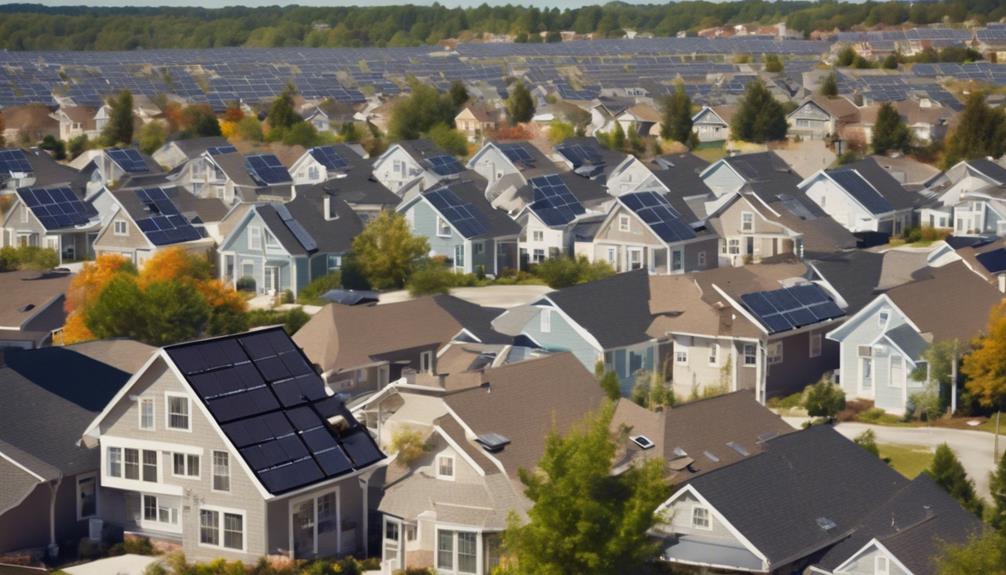
Considering the positive impact on both mortality rates and the economy, wind and solar energy have proven to be essential contributors to public health and economic well-being.
These renewable sources of power have been instrumental in avoiding 3,000 to 12,700 premature mortalities, highlighting their significant role in improving public health.
The avoided mortalities from wind and solar energy not only benefit health outcomes but also translate into substantial economic advantages.
Investments in these clean energy sources lead to cost savings in healthcare, further boosting economic well-being.
The cumulative air-quality benefits from wind and solar energy, estimated at US$29.7–$112.8 billion, emphasize the positive impacts on both health and the economy.
Environmental Benefits and Advancements
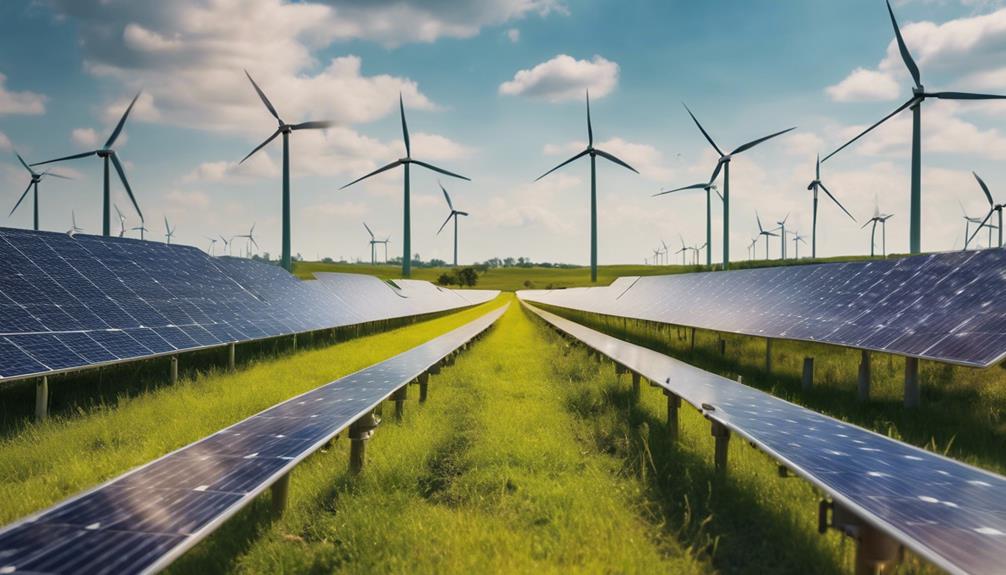
As we explore the environmental benefits and advancements of solar and wind energy, it's crucial to recognize the role of green hydrogen in supporting energy storage and reducing fossil fuel dependence.
Green hydrogen from renewable sources plays a significant part in decreasing the environmental footprint of energy production by offering a sustainable and efficient storage solution.
Additionally, technological innovations in solar energy, such as advances in Photovoltaic cells, not only enhance efficiency but also lower maintenance costs, making solar energy more accessible and cost-effective for consumers.
Moreover, initiatives like RecycLiCo Taiwan Battery Recycling are essential in promoting a circular economy and addressing e-waste challenges, contributing to a cleaner environment.
Frequently Asked Questions
What Are 5 Advantages of Wind Energy?
When you consider the question about wind energy advantages, it's important to highlight its low cost, minimal environmental impact, quick construction, biodiversity support, and competitiveness in suitable areas, making it a sustainable electricity choice.
What Are 3 Advantages and 3 Disadvantages of Wind Energy?
When it comes to wind energy, three advantages include low environmental impact, quick payback in energy production, and competitive cost-effectiveness. Bear in mind that there are also challenges like intermittency, noise, and visual disturbances to bear in mind.
What Are the Pros and Cons of Solar Wind?
When it comes to solar and wind energy, you'll find pros and cons. Solar offers reliability like a steady heartbeat, while wind shines in efficiency. Embrace the power of these renewable sources for a brighter future.
What Is a Major Disadvantage of Both Solar and Wind Power?
When considering solar and wind power, one major disadvantage is their intermittent nature, dependent on weather conditions. This can pose challenges in matching energy supply with demand in the electricity grid, necessitating energy storage solutions.
How Can Solar and Wind Energy Contribute to Energy Efficiency in Homes?
Solar and wind energy can greatly enhance the energy efficiency of homes. By incorporating these renewable sources, homeowners can reduce their reliance on traditional energy sources and lower their energy bills. In addition, pairing these solutions with energy efficient appliances investment value can further maximize the overall energy efficiency of a home.
Conclusion
To sum up, the advantages of solar and wind energy are clear. Not only do they provide clean, renewable sources of power, but they also have positive impacts on health, the economy, and the environment.
By harnessing the power of the sun and wind, we're creating a more sustainable future for ourselves and future generations. So why wait? Embrace solar and wind energy today and make a difference for tomorrow.
